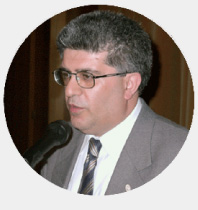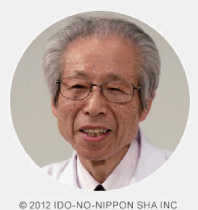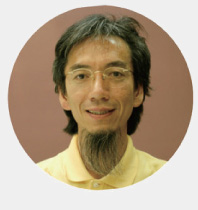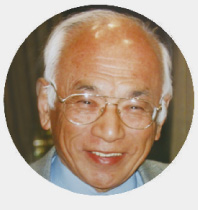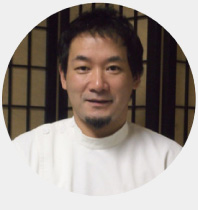TESTIMONIAL
HOME > TESTIMONIAL > Wernicke, Thomas

Wernicke, Thomas
General practitioner
M.D, President of the International Society for Traditional Japanese Medicine
(IGTJM e.V.)
Advantages of New Pyonex
- Painfree application of the New Pyonex 0.3 and 0.6, therefore particularly good for the treatment of babies and children.
- Adhesive does not come off during showering or bathing.
How I use New Pyonex, Clinical Application of New Pyonex
I treat 8 to 15 children in my clinic every day. The use of press tacks in addition to Japanese pediatric Shonishin and laser acupuncture has proven to be very helpful. The New Pyonex needles with a length of 0.3 and 0.6 mm are particularly useful.
Since the skin of children, and that of babies in particular, is considerably thinner than that of adults and therefore much more sensitive, the shortest needle with a length of not more than 0.3 mm is suited particularly well for the treatment of babies. At this length the needle reaches only the upper epidermal layer (thickness of the epidermis in the first month after birth is between 50 and 55 μm) and does not penetrate. This layer is free of cutaneous nerve plexi and blood vessels so the application of these needles is non-invasive and gentle, especially since it does not produce any discomfort or pain. For this reason the 0.3 mm New Pyonex particularly suited for the treatment of newborn babies and infants.
The main application of New Pyonex for newborns and babies is digestive problems. During the first months after birth the so-called “three-month colic” is mainly responsible for screaming fits. In this case treatment with a press tack is very helpful. During the Shonishin training I offer midwives, I teach them the application of the 0.3 mm New Pyonex for digestive problems – in particular for infantile colic. This is part of the standard training and the midwives who clinically apply New Pyonex do appreciate it.
The needles can be applied without any problems on both sides of the navel in the region of the acupoint ST-25. Here the New Pyonex shows its advantage. Because their non-invasive properties, not even the diaper waistband putting pressure on the skin and the moist heat developing under it lead to any degree of irritation in the area of the press tack or the plaster. Another advantage of the New Pyonex is that bathing and washing doesn’t cause the press tack to detach. Apart from infantile colics, the 0.3 mm New Pyonex needles are useful in the treatment of babies with marked vomiting as well as reflux. In both cases the needles are applied to Ren-12. For insomnia the points Ren-15 and BL-15 are treated with the 0.3 mm New Pyonex.
The advantage of the New Pyonex over other commercially available press tacks becomes obvious especially in the treatment of babies. Apart from pain-free application, New Pyonex allows parents to be included in the treatment of their child. Parents may administer a gentle stimulation through the needle, when they apply a light circling pressure over the press tacks at home. This is done most conveniently during the regular diaper changes. With other press tack needles this would quickly lead to overstimulation - a danger not associated with the 0.3 mm New Pyonex.
As a general rule the time press tacks are left in place for pediatric treatment is as follows: They should be removed after three days, and this can be done without any problems by the parents. For older children, with diseases of the musculoskeketal system, a more intense stimulation of acupoints, Ahshi points, and relevant trigger points is required. In cases of cerebral palsy (spastic form) for example, the absolutely pain-free application of the 0.6 mm New Pyonex at the acupoints SP-9 has been very helpful in achieving a reduction of the adductor muscle spasms.
In cases of general increase in muscle tension, LR-3 is treated to relieve the increase in tension. Contracture in arms (flexion deformity) can be treated by placing 0.6 or 0.9 mm New Pyonex at LI-11, and likewise for contracture in the legs can be treated with GB-34. Through the prolonged application of press tacks, the dispersion effect on the acupoints can be intensified without causing overstimulation. These press tacks should be removed after 3-5 days. If continued treatment with the press tacks is indicated, they can be reapplied after a 3-day interval.
The press tack needles are also very useful in the treatment of adults. It is advantageous particularly when timely acupuncture treatment is not possible due to scheduling constraints – when a patient has to be fitted somewhere into our busy schedule due to the sudden onset of pain, for example. In this case the treatment of ashi points with the press tack needles alone can take the edge off the pain.
The following has been helpful in general regarding press tack length in the treatment adults: Patients with complaints in the lumbar region react more sensitively to a needle prick in the lumbar region than in the shoulder region. This is due to the density of pain receptors, which is higher in the lumbar region than in the neck and shoulder region. For this reason, adults with acute lumbar pain who are pain sensitive for example, are treated with the 0.6 mm New Pyonex, while the 0.9 mm New Pyonex is used for pain in the neck and shoulder region. Patients who are less pain sensitive may be treated with the 0.9 mm New Pyonex (lumbar region) and the 1.2 mm New Pyonex (shoulder-neck region).









